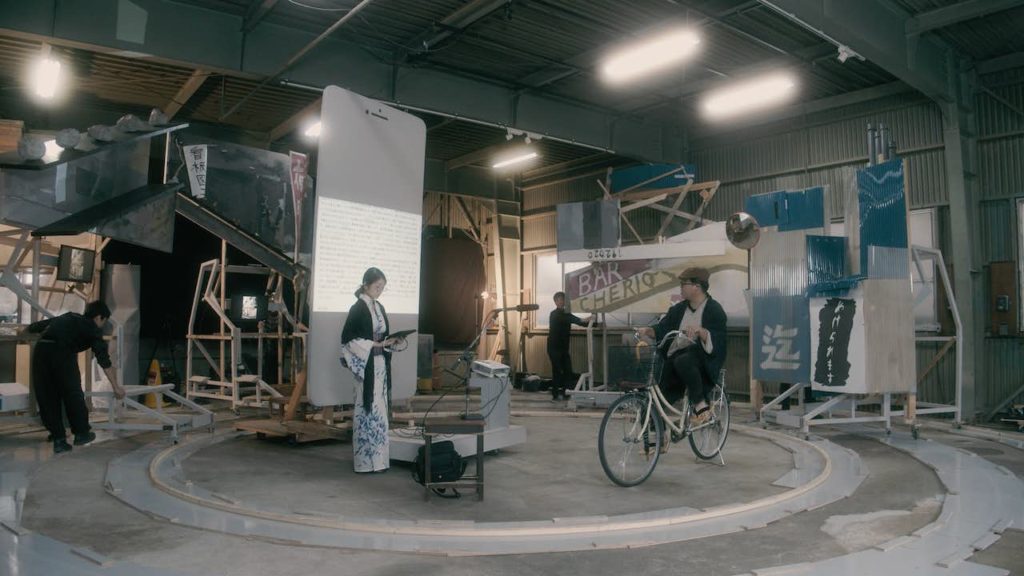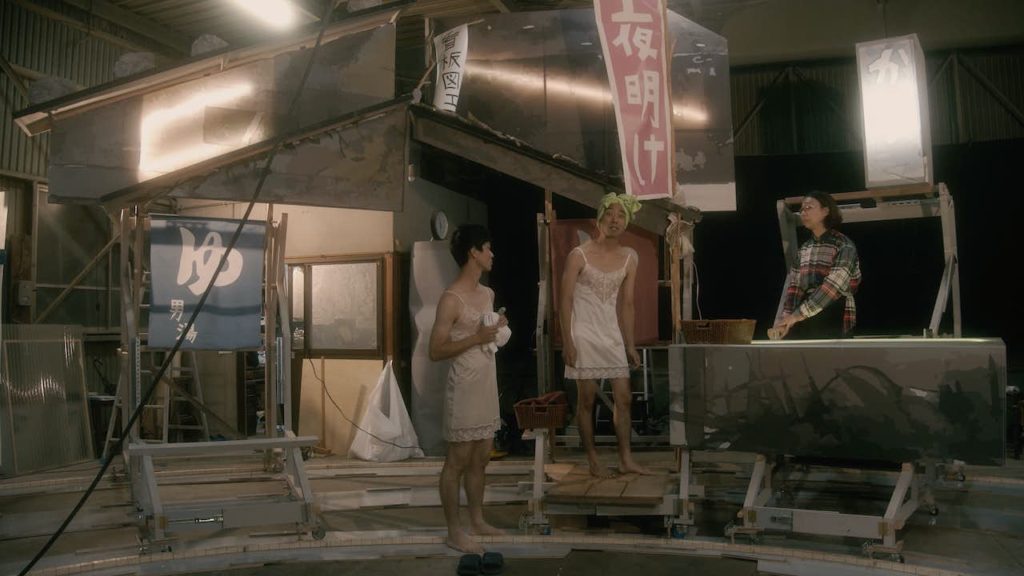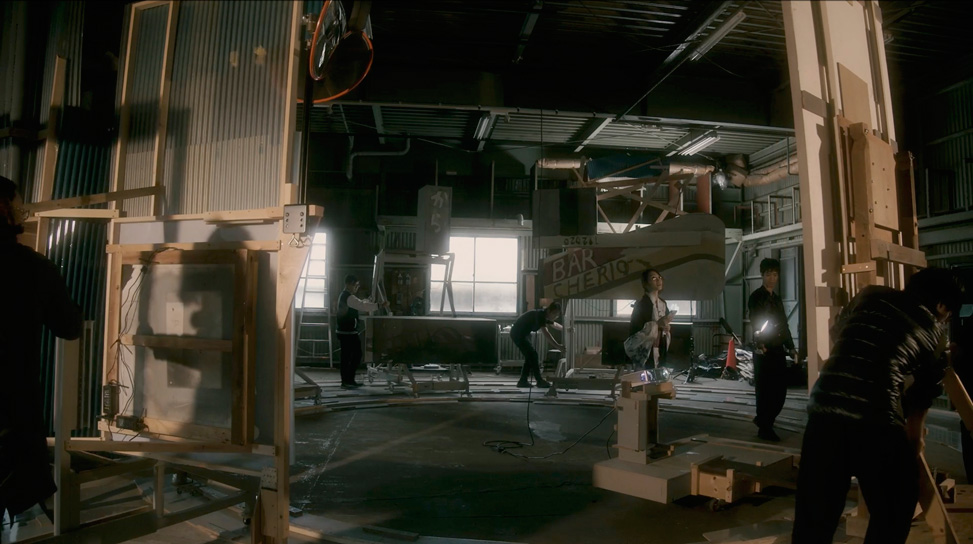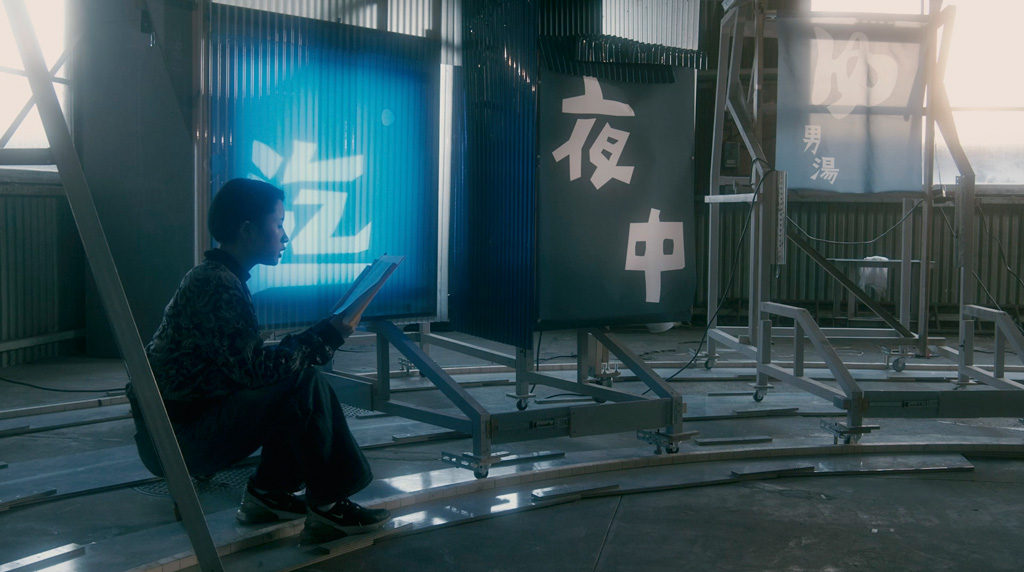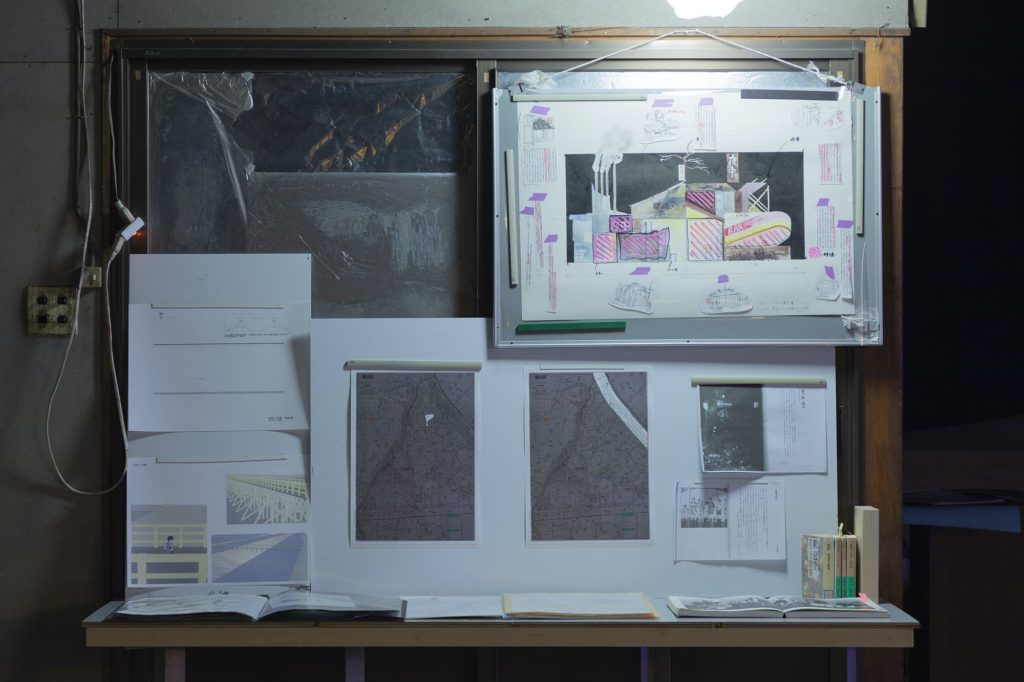Format
field research
installation
From Dawn to Dawn: A Hyper Pop-Art Stand Play
The film was shot in a factory in downtown Tokyo, and the video and installations were exhibited. It was learned that the 1911-1930 construction of the Arakawa spillways saw the river enormously expanded by human hands, particularly Korean and Chinese immigrant workers. Many Koreans were then murdered as false rumors spread in the immediate aftermath of the Great Kantō Earthquake of September 1, 1923. The Tokyo Skytree has brought big changes to this urban landscape, which is now packed with condominiums. Its inner workings remain, built on racial and economic divisions and a history of many people’s hardships. The Installation references the sketches collected by Kon Wajiro of temporary barrack structures built in the wake of the Great Kantō Earthquake, as well as the stage design by Murayama Tomoyoshi for a production of Georg Kaiser’s “From Morning to Midnight” — featuring work by Kon Wajiro and his team, “From Morning to Midnight” was staged at Japan’s first dedicated theater for “Western-style” shingeki plays, Tsukiji Shōgekijō, which was built in Taishō 13 (1924), the year after the earthquake.
Performers: Tagami Aoi, Hoshi Budō, Saitō Takafumi, Kawamura Kazuhide, Inoue Tōru, Yonezawa Erika, Nakajima Yurie, Endō Jun’ichirō, Hasegawa Yoshirō, Meguninja
Production:
Stage design, CG design: Hasegawa Yoshirō
Stage production, Props, Wardrobe: Olta
Landscape photos: Hoshi Budō, Meguninja
Manga: Satō Tanshō
Sound, Recording: Inoue Tōru
Filming, Film editing: Agata Kenji
Scenario, Film editing: Meguninja
Direction: Jang-Chi
Exhibition: “Chōshū geijutsu sutando purē: Yoake kara yoake made” (From Dawn to Dawn: A Hyper Pop-Art Stand Play), Fantajia! Fantajia! Ikikata ga katachi ni natta machi (Fantasia! Fantasia! Cities Formed from Ways of Living)
Date: 7-29 Nov 2020
Venue: Hōjō Kōmuten Tonari (3-22-10 Higashi Mukōjima, Sumida Ward, Tokyo)
Support: Tokyo Metropolitan Government, Arts Council Tokyo (Tokyo Metropolitan Foundation for History and Culture), Ureshii yokan, Ltd.
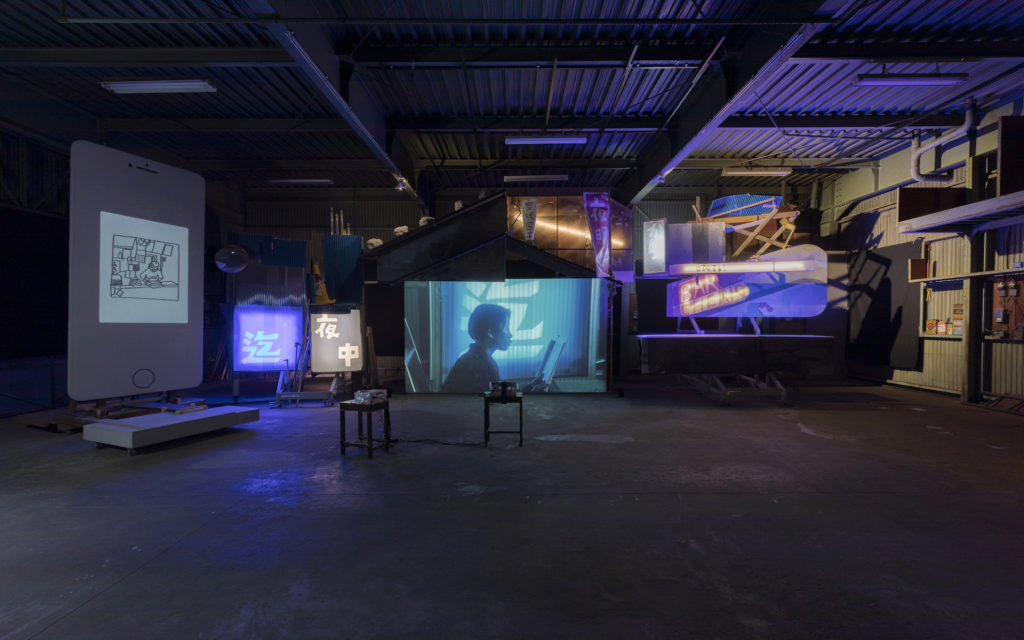
1

3
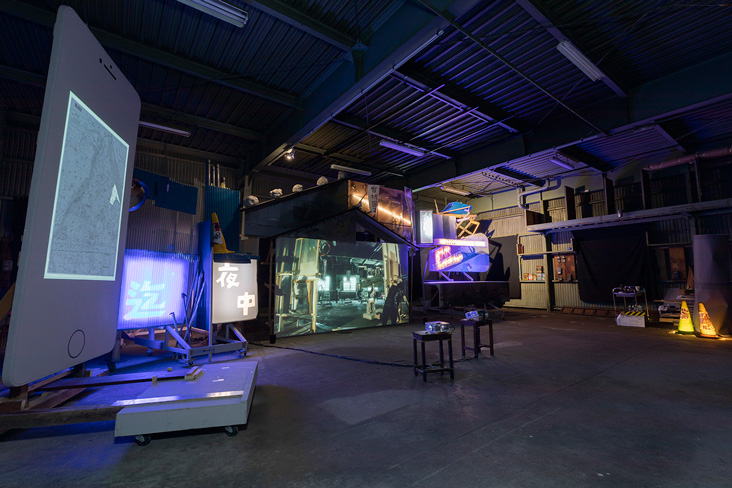
4
1-4 Photo: Agata Kenji
